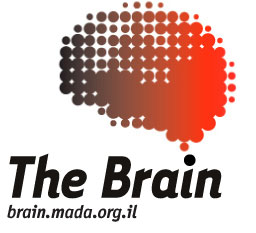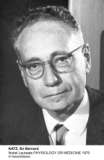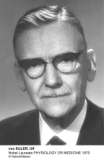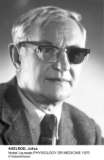


 |
||
|
1970 - Bernard Katz, Ulf von Euler and Julius Axelrod
The three scientists have been working independently of each other, each investigating the mechanism of transmission between nerve cells. Katz discovered the existence of "miniature end-plate potentials", demonstrating that acetylcholine, the messenger substance between motor nerves and muscles, was released from the nerve terminals in small packages, which he named quanta. von Euler identified the adrenergic transmitter substance, noradrenaline, as a neurotransmitter in the sympathetic nervous system. He also showed that this substance is stored in small nerve granules, particles about one ten thousandth of a millimetre in diameter. Axelrod discovered both the enzymatic inactivation of this neurotransmitter, noradrenaline, and it's reuptake into the storage sites in the nerve terminals. These are rapid, effective and economic ways of limiting the duration of the effect of the nerve impulse. These discoveries are fundamental in theoretical and practical neurophysiology and neuropharmacology, and have greatly stimulated the search for remedies against mental and nervous disturbances, such as Parkinson disease.
|
||



